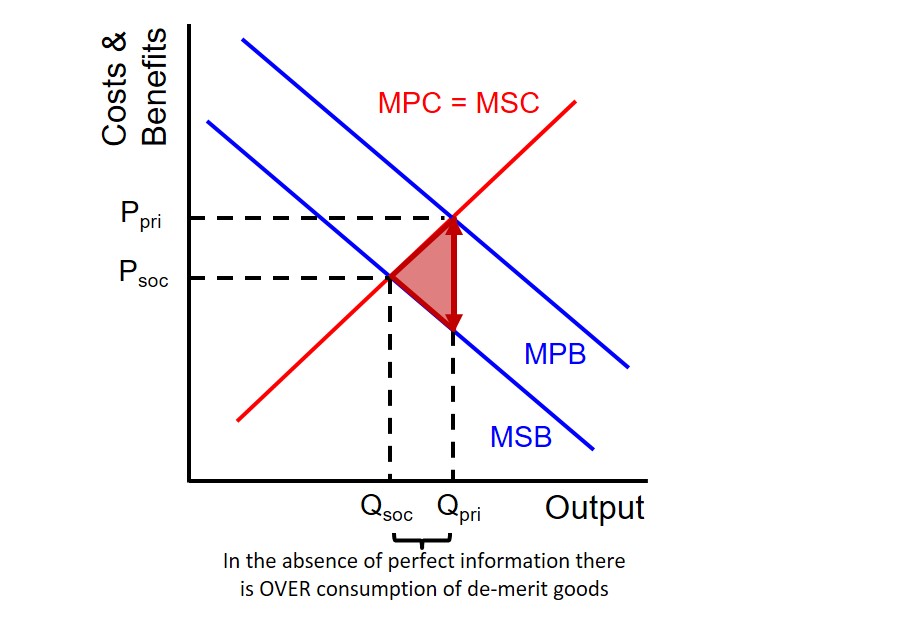Costs arising from the consumption of a good or service that are experienced by third parties e.g. noise disturbance, injuries requiring treatment and animal distress associated with consumption of fireworks.
These types of externalities are produced due to the over-consumption of a demerit good.
This is because the over-consumption creates a divergence between the marginal private benefit and the marginal social benefit curves. This is because consumers do not take into account the negative effects on society of consuming this good e.g. second hand smoke when smoking a cigarette. The external cost that is released onto society is represented by the dead weight loss triangle below.

This type of externality can be internalised via government interventions such as: indirect taxes, educational policies and product bans.